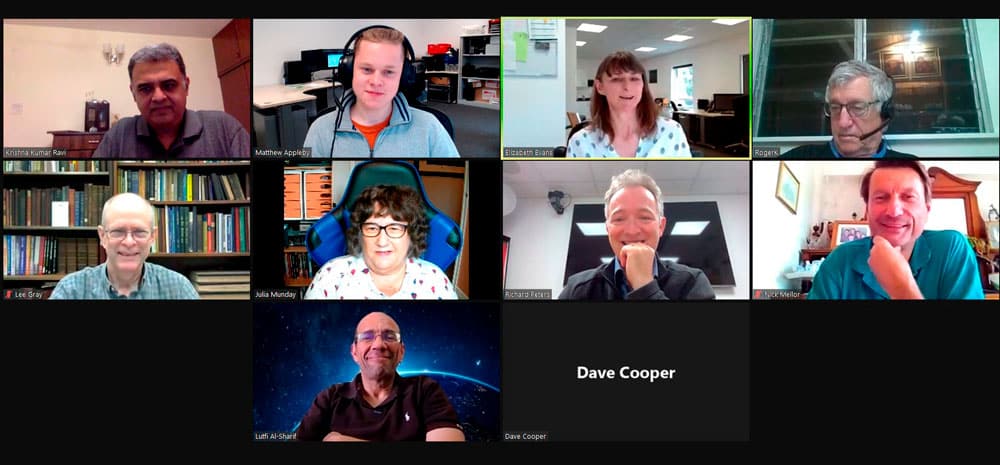by Nick Mellor
For the second year running, the Lift and Escalator Symposium took place online, welcoming 120 attendees from 20 countries virtually on 22-23 September. Instead of taking place in front of a packed room of delegates as in the past, sessions were conducted over video link with questions submitted in advance and through a chat facility. Delegates were able to watch live or replay later at their convenience.
This format worked well; we have all become better at interacting with each other virtually, and the technology available to facilitate online events has significantly improved. As the world struggles to come to terms not only with the pandemic but also the climate change crisis, the ability for us to meet online also has a very significant environmental benefit.
Following costs from cancelling events during the pandemic, the Symposium Trust raised further funds earlier this year to ensure this event, and we hope an in-person symposium can be held next year. The trust is very grateful to those who donated and for the support of attendees at the event.
Day One — Accidents and Safety
Professor Stefan Kaczmarczyk of the University of Northampton opened proceedings and introduced the speakers on day one.
Kicking off the event with his presentation, Dr. Lee Gray of the University of North Carolina at Charlotte included details of an early fatal elevator accident when, in the late 19th century, a test of free-fall protection (by parting the suspension) failed with four people on the platform. Lee also reported on an unsubstantiated report that the expression “watch your step” originated from a warning to passengers entering and leaving lift cars before accurate levelling became the norm.
Following this, Roger Kahler of InterSafe presented a thought-provoking paper which suggested that economic damage arising from accidents might be greater than we think. The paper suggested that loss due to non-fatal accidents is not well recorded, which hinders such a study but, in other fields, has been shown to be significant. Additionally, the paper presented a model for thinking about the timeline of an elevator fatality event, suggesting there is still much more to do in the engineering space versus the procedural/training space.
Symposium regular David Cooper of LECS(UK) presented a paper on lift brake failures. Brake failures affect many types of equipment, and the development of measures in the standards to combat these was traced. The consequences of a failure can range from a near-miss to one or more fatalities. The paper looked at causes of brake failure and offered examples, including one particular issue with brake wear arising from lift machines driving through the brake. The brake might not fully lift for a number of reasons, and the fault might not be easily observed. Over a period of time, wear of brake pads can result in the brake not holding the lift, i.e., unintended car movement.
Complementing Cooper’s paper on lift brake failures, Professor Lutfi Al-Sharif of the University of Jordan presented a paper looking at escalator braking system faults. Two types of faults were examined resulting in either insufficient braking force (failing to stop the descending load) or in excessive braking force (excessive deceleration). The first fault can result in escalator runaway, and the second fault can result in passenger falls, both serious. Of great interest was the proposal to use intelligent escalator braking systems in order to control the deceleration of a stopping escalator.
After a break, your author chaired a discussion panel on accidents and safety. The distinguished panellists introduced themselves and their thinking in the areas of safety:
- Phil Hofer, Jardine Schindler, Hong Kong
- Julia Munday, Hoare Lea, U.K.
- Krishna Kumar, PAPL Corporation, India
- Dave Cooper, LECS (UK)
Panellists grappled with questions from delegates including questions arising from the earlier sessions and from developments in the key standards to improve safety. One trend which emerged was the potential for systems and sensors and the challenge for standards to innovate to provide better protection using these possibilities.
Day Two — the Future of Modernisation
After a very successful first day, the second day opened with modernisation as the theme for discussion.
Rory Smith from the University of Northampton opened with a talk about the future of modernisation. This has been a topic of discussion in the industry for some time now, with many people expressing a view that the lift industry is becoming much like a throw-away society and that modernisation will become a thing of the past. Fortunately, Smith covered all aspects of the future of modernisation as well as exploding this myth.
The second paper was presented by the Electrical and Mechanical Services Department of the Hong Kong Government and examined uplifting the safety of aged lifts in Hong Kong. Hong Kong is, of course, a location where land is at a premium and, therefore, most buildings are high rise, including commercial and residential. Whilst safety is paramount in our industry, this becomes more focused with high-rise, high-speed lifts, where the outcome of failures can be more severe.
A panel discussion, chaired by Adam Scott of Sweco UK Ltd., rounded off the day, Lively debate ensued with the panellists made up of John Carroll, Norman Disney & Young, Australia; Roger Howkins, Arup, UK; Richard Peters, Peters Research Ltd, UK; and Smith and Cooper bringing different aspects of our industry to the table.
The next Lift and Escalator Symposium will take place 21-22 September 2022.
About the Lift and Escalator Symposium Trust
The Lift and Escalator Symposium is run by a not-for-profit trust dedicated to improving training and education in our sector. The trustees (David Cooper, Stefan Kaczmarczyk, Richard Peters and Nick Mellor) reflect the strong commitment to education and training by the University of Northampton, CIBSE Lifts Group, and the Lift and Escalator Industry Association (LEIA).
Get more of Elevator World. Sign up for our free e-newsletter.










